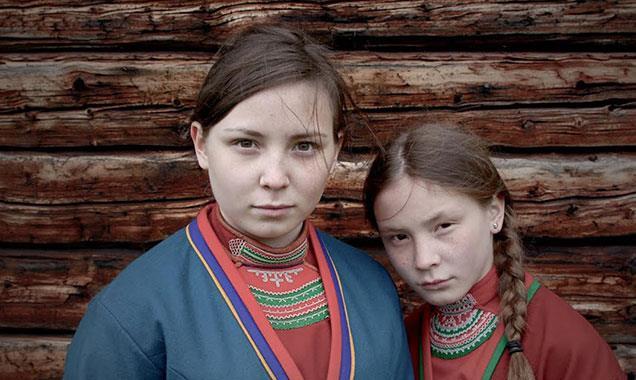Samí Blood (Amanda Kernell, 2016): Sweden | Norway | Denmark

Reviewed by Hanna Olsson. Viewed at the Santa Barbara International Film Festival 2017.
Samí Blood reflects the indigenous scandinavian culture by taking us on a journey with a young girl named Elle Marja. The movie begins with Elle Marja as a grandma who seemingly is distressed. It then carries over into her past when she was young girl living with her lappar family. Lappar is the term used for Samí natives. The film really engages the viewers with luscious nature and mountains which is the home for Samí people. They are best known for living in the Scandinavian mountain side where they herd reindeers. Elle Marja and her younger sister embrace the Samí culture by singing a traditional yoik before they head to boarding school.
While attending boarding school, Elle Marja soon takes head of her class by her proficient swedish. Feeling proud of herself, she is soon discouraged when her and her classmates are constantly made fun of for being lappars. One day, Elle Marja rebels against the boarding school rules by changing out of her uniform and attending a dance. She attends the dance in hopes that no one will know she is a lapp and to finally fit in as a normal swede. While changing her name to Christina, she introduces herself to a young man where they form a romantic fling. Taken away from him by an angry teacher and her tattle tailing sister, Elle Marja is determined to be with him again. Breaking against her culture and relationship with her sister, Elle Marja sets off to upstate Sweden to become a normal swede and to be with Nicolas again. The film captures the struggle and stereotypes that indigenous people face. Elle Marja was judged for her size and body structure and how that relates to being a Lapp. This made her feel like she did not belong but she kept fighting to make something of herself. Elle Marja tried to work out a relationship with Nicolas but is turned away because of the judgment his parents had about her being a lappar. Being turned away and not having a home, Elle Marja turned to a school where she was taken in to take normal classes. In surprise, the other classmates were interested about her being a lappar and insist are her yoiking for Nicolas’s birthday. This shows the different opinions that swedes have about the Samí culture. With the struggle of fitting in with tall skinny blonde girls, Elle Marja strived to be like them and knew she wanted to continue attending the same school as them.
With no money to pay for school, she heads back home to her lappar family in the mountains, in hopes to receive money and understanding from her family. When she returns home she is welcomed back but her mother is clearly upset about her leaving boarding school, and after she asks about money to attend school in upstate Sweden, her mother becomes more upset with her leaving her culture. Elle Marja finds the courage to break free from her culture and aspire to become the person she wants to be. This film gives an insight of an indigenous culture that is not commonly talked about and the way they are viewed and treated by other scandinavians. This movie was beautifully made showing the beauty of Sweden and the prevalence of indigenous culture in Scandinavia. I highly recommend this movie to anyone interested in seeing different perspectives of Scandinavia.
About this entry
You’re currently reading “Samí Blood (Amanda Kernell, 2016): Sweden | Norway | Denmark,” an entry on Student Film Reviews
- Published:
- 02.21.17 / 8pm
- Category:
- Films, Santa Barbara Film Festival 2017
No comments
Jump to comment form | comments rss [?]